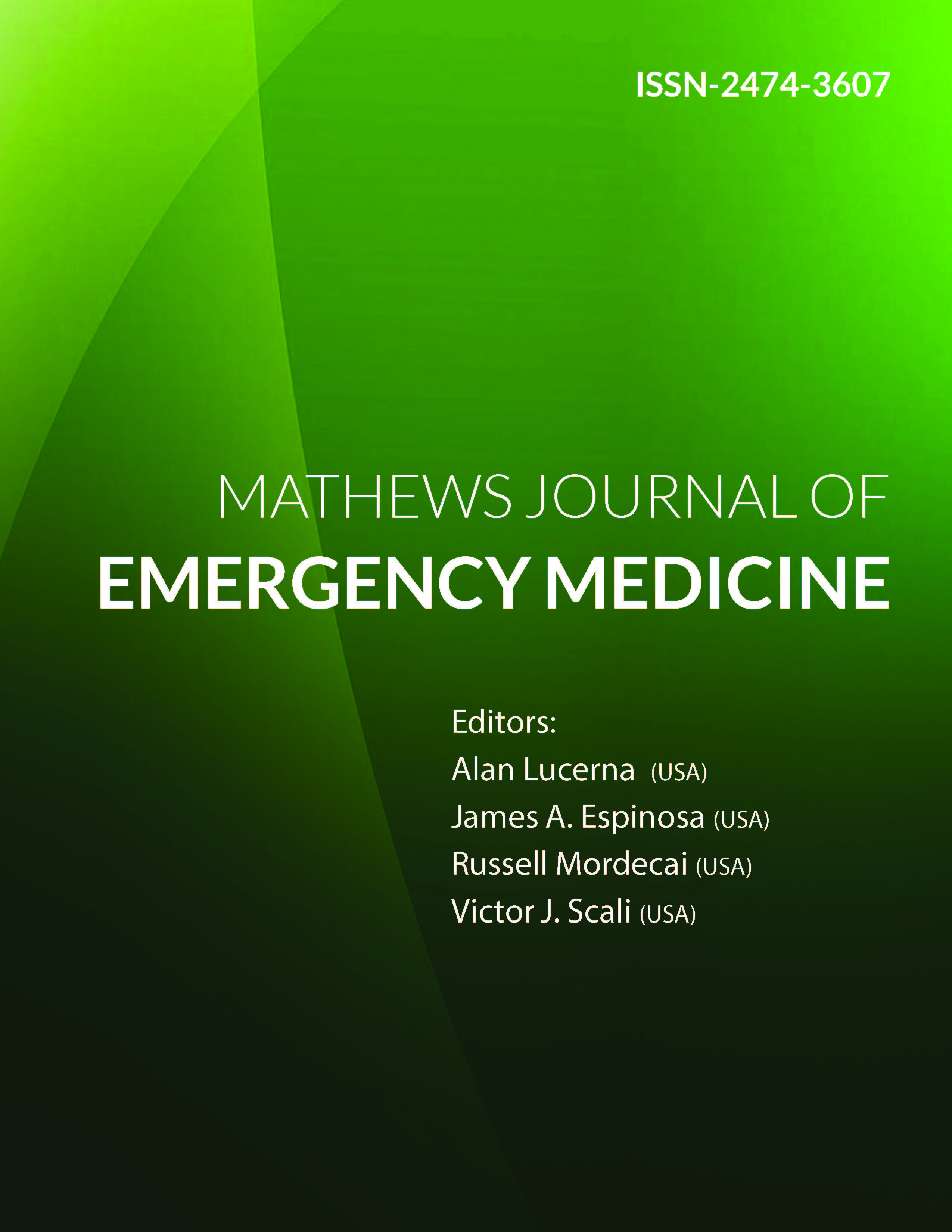
Information Links
Previous Issues Volume 3, Issue 1 - 2018
Predictors of Clinical Outcome after Intravenous Thrombolysis in Ischemic Stroke without Large Vessel Occlusion: The Role of Admission Glycemia
Bruno Chiara, Colavita Guillaume, Romero Gwendoline, Mahagne Marie-Helene, Suissa Laurent
Stroke Unit - University Hospital of Nice - Pasteur2 Hospital - Voie Romaine - 06000 Nice - France
Corresponding Author: Suissa Laurent, Stroke Unit - University Hospital of Nice - Pasteur2 Hospital - Voie Romaine - 06000 Nice - France, Tel: 0033492032790; E-Mail: [email protected]
Received Date: 05 Oct 2018
Accepted Date: 12 Nov 2018
Published Date: 16 Nov 2018
Copyright © 2018 Laurent S
Citation: BRUNO Chiara, COLAVITA Guillaume, ROMERO Gwendoline, MAHAGNE Marie-Helene, et al. (2018). Predictors of Clinical Outcome after Intravenous Thrombolysis in Ischemic Stroke without Large Vessel Occlusion: The Role of Admission Glycemia. Mathews J Emergency Med. 3(1): 030.
ABSTRACT
Introduction: In the era of mechanical thrombectomy, intravenous thrombolysis (IVT) by tissue plasminogen activator (tPA) remains the first choice treatment for ischemic stroke without large vessel occlusion. In literature few studies are available regarding the acute phase treatment of ischemic stroke without large vessel occlusion. The existence of potential predictive factors of clinical improvement after IVT treatment in this subgroup of stroke patients is not well established.
Aim of the study: To identify predictive factors of clinical outcome in patients treated with tPA alone for acute stroke without large vessel occlusion.
Methods: A retrospective analysis of a prospectively collected database of consecutive patients aged over 18 years, hospitalized in Stroke Unit of Nice from January 2012 to August 2016 for acute ischemic stroke without large artery occlusion, treated with IV tPA within 4.5 hours, were realized. Clinical outcome was apprehended by the modified Rankin Scale (mRS) at 3 months. To determine independent predictive pre-treatment variables of good clinical outcome (mRS=2), univariate and multivariate binary logistic regression models were used.
Results: 162 stroke patients were analyzed in the study. At 3 months, 119/162 (76.46%) patients had mRS=2. The multivariate analysis showed that age (/10 years; OR: 1.62 95%CI[1.10-2.40]), baseline NIHSS (/5 pts; OR: 1.57 95%CI[1.06-2.32]) and admission glycemia (/0.5 g/l; OR 1.63 [1.14-6.25]) were independent predictive factors of poor clinical outcome after IVT.
Conclusion: Age, baseline NIHSS and admission glycemia are independent predictive factors of clinical outcome after IVT. Admission glycemia was the only modifiable independent predictive factor found. Studies are required to demonstrate the potential benefit of an aggressive glucose-lowering treatment for the management of acute hyperglycemia in acute ischemic stroke including stroke treated by tPA alone.
KEYWORDS
Acute Ischemic Stroke; Thrombolysis; Outcome Predictor; Hyperglycaemia.